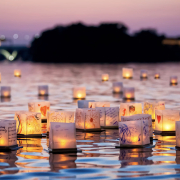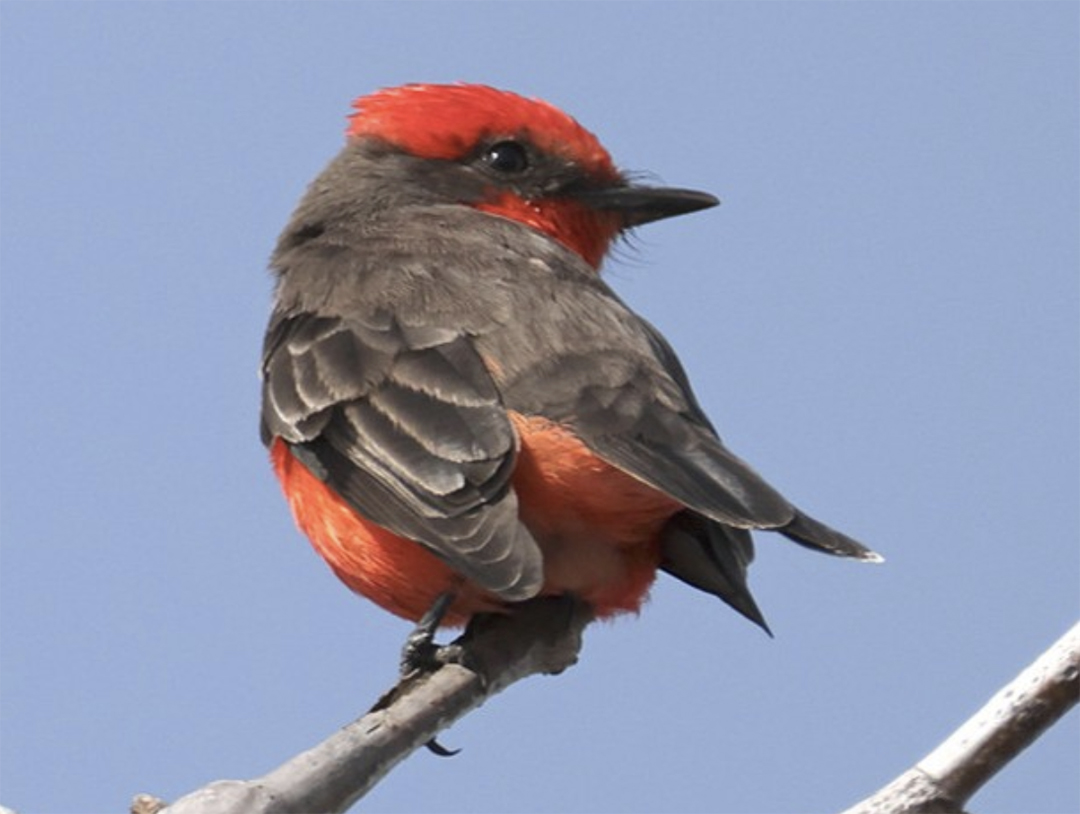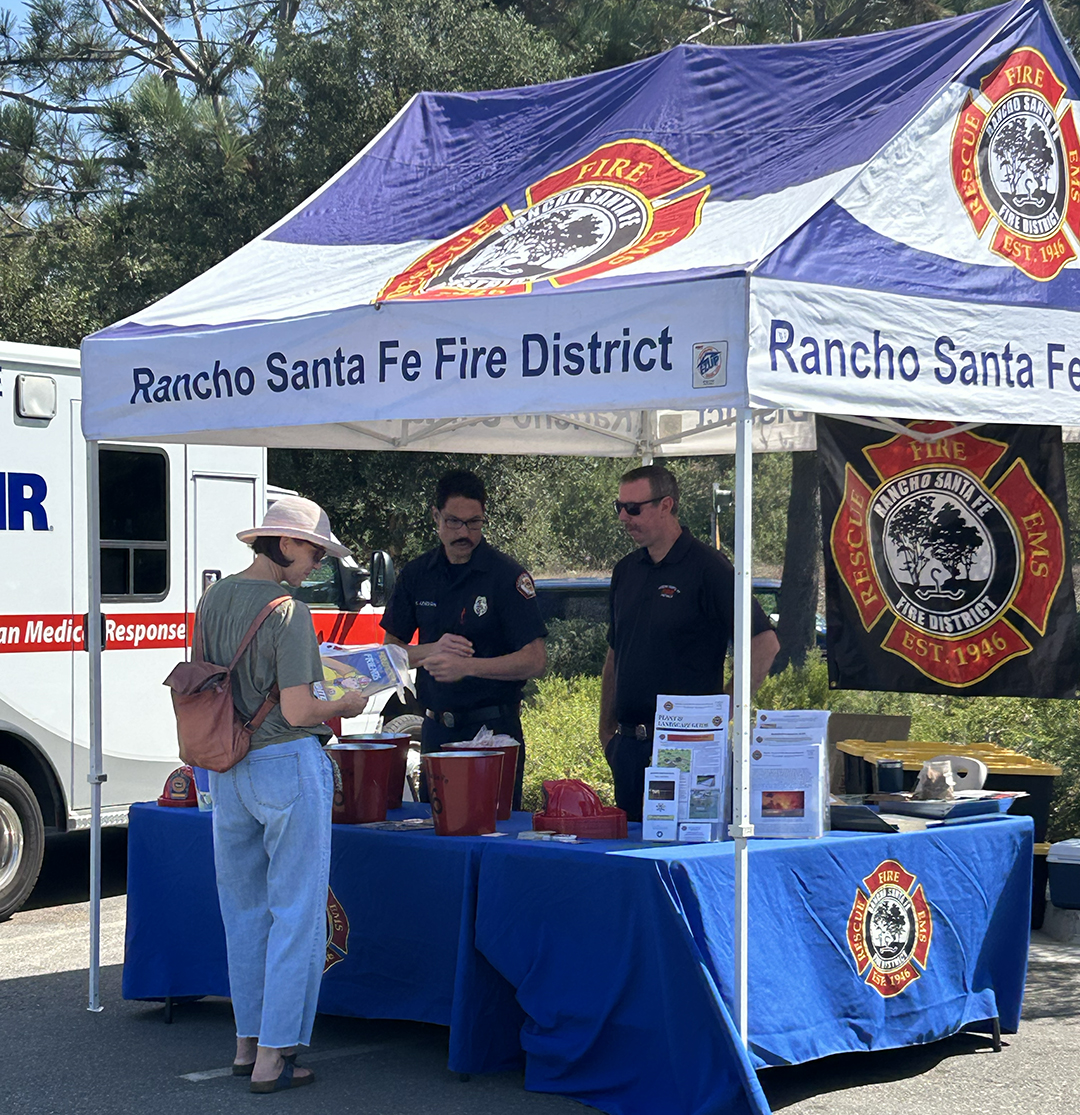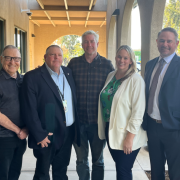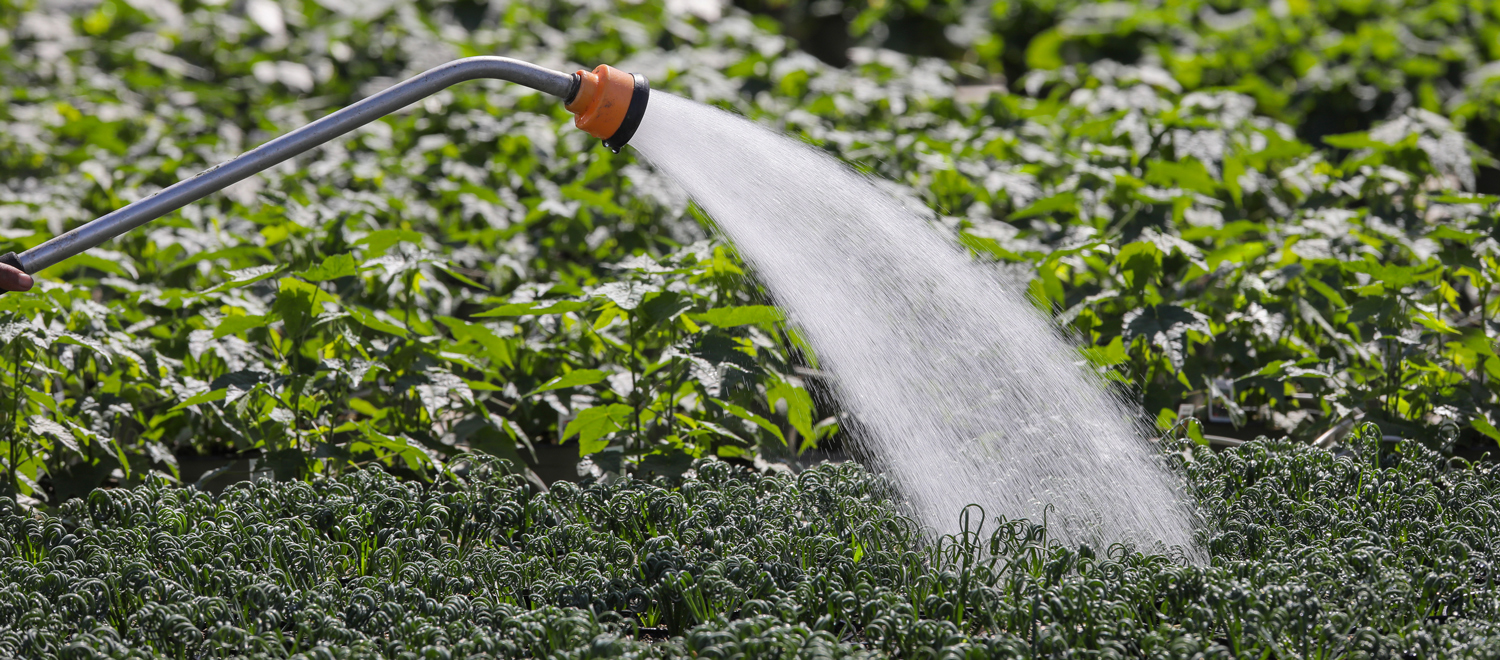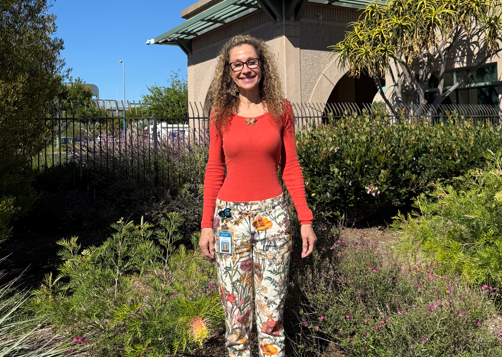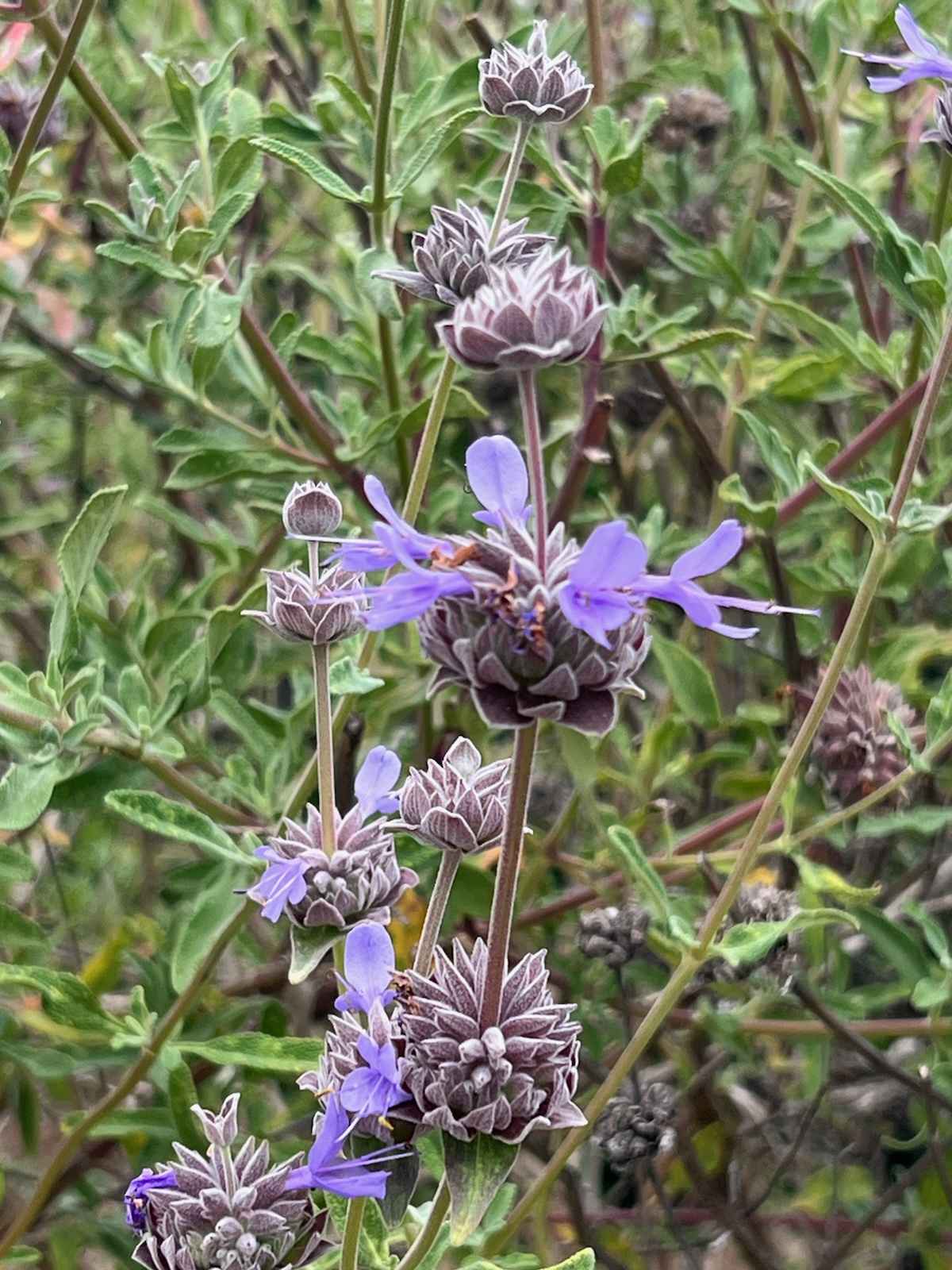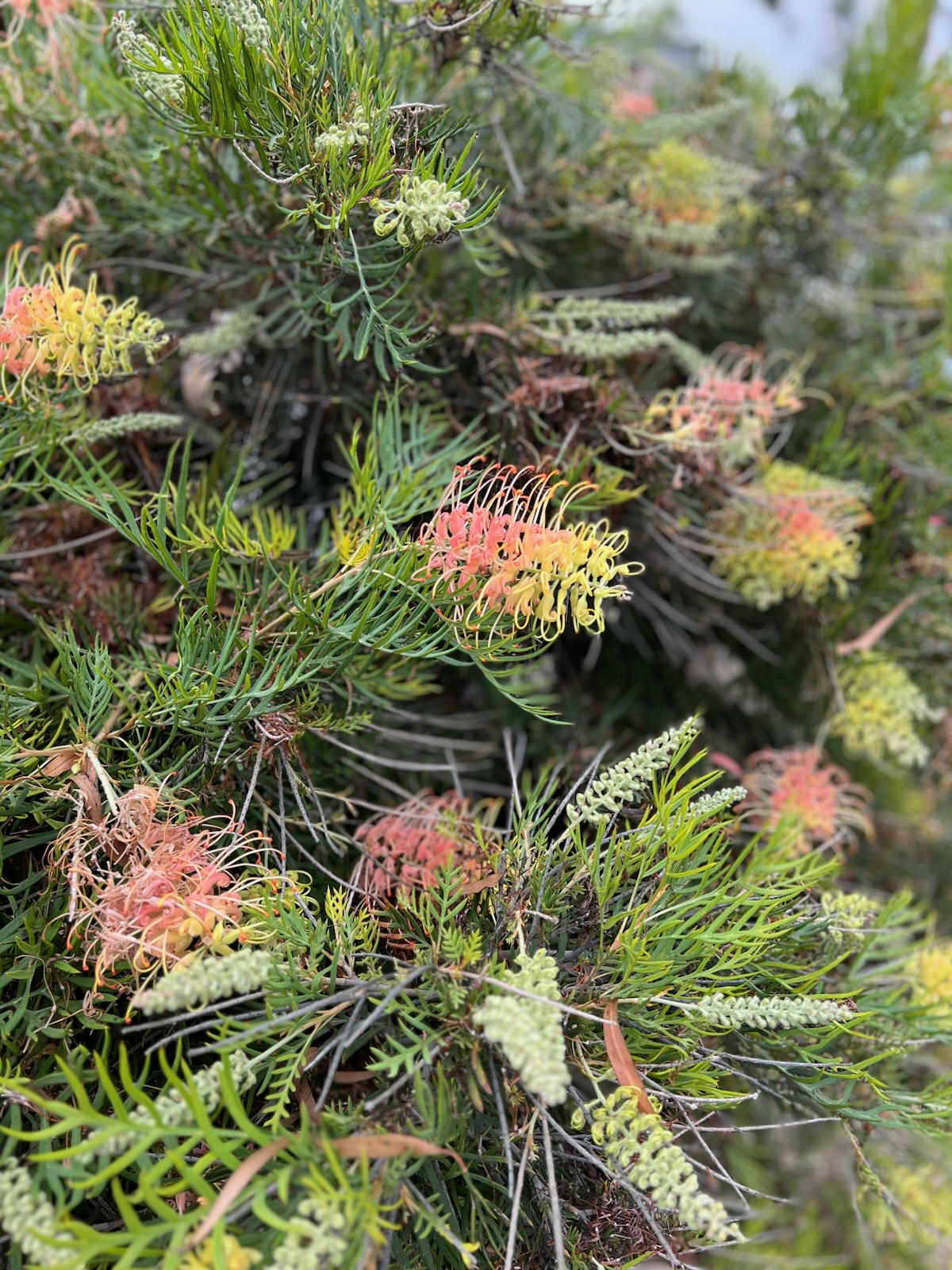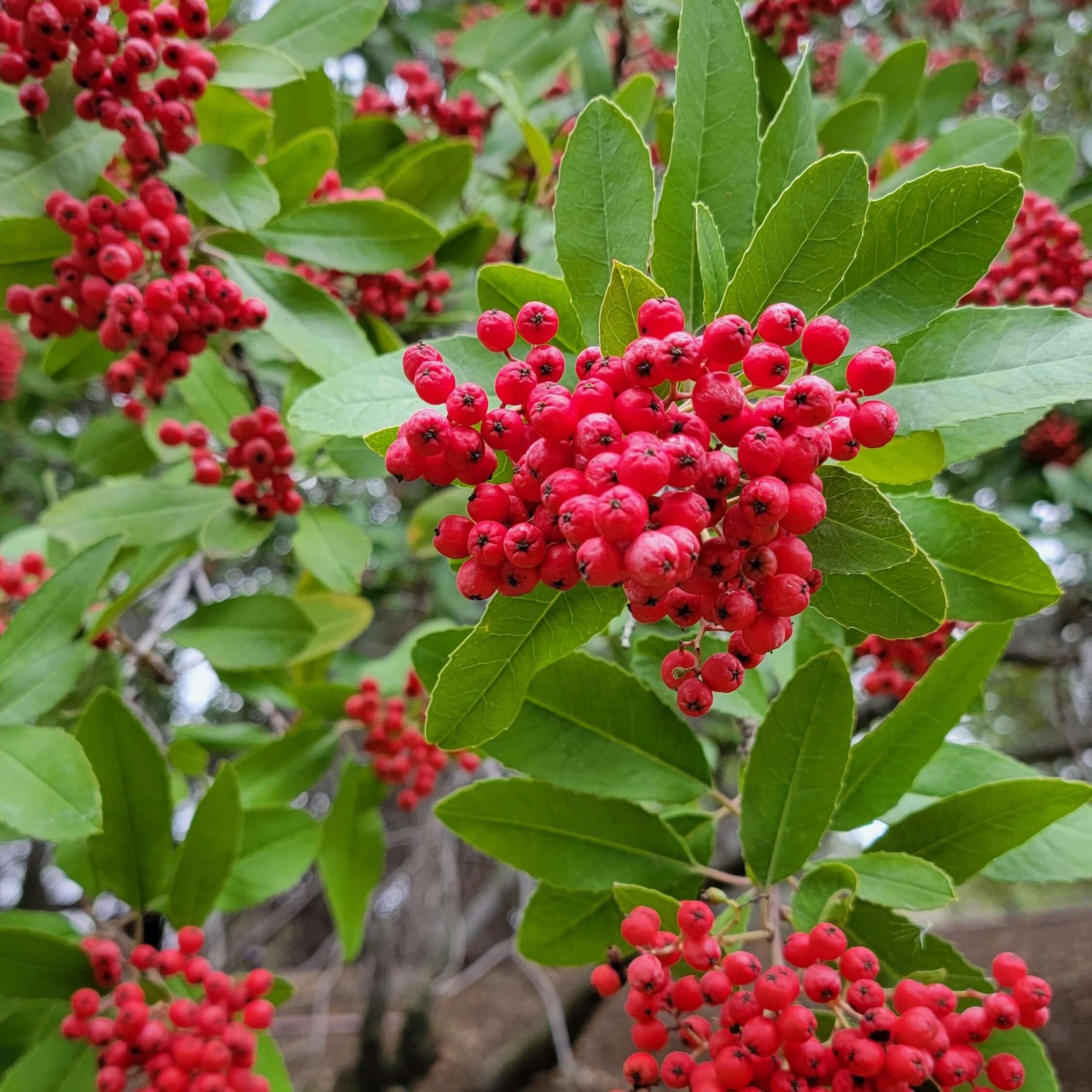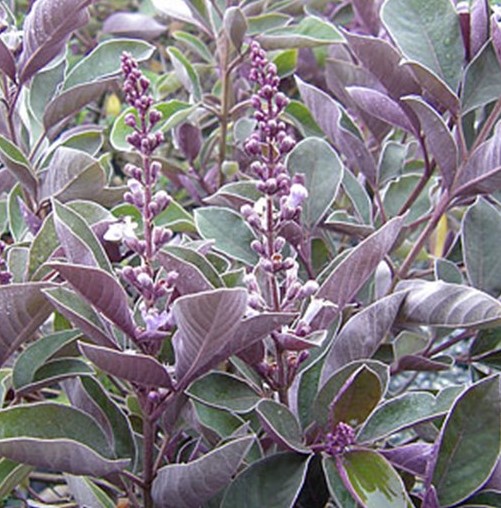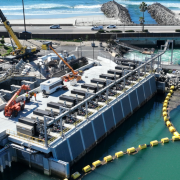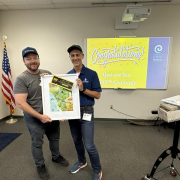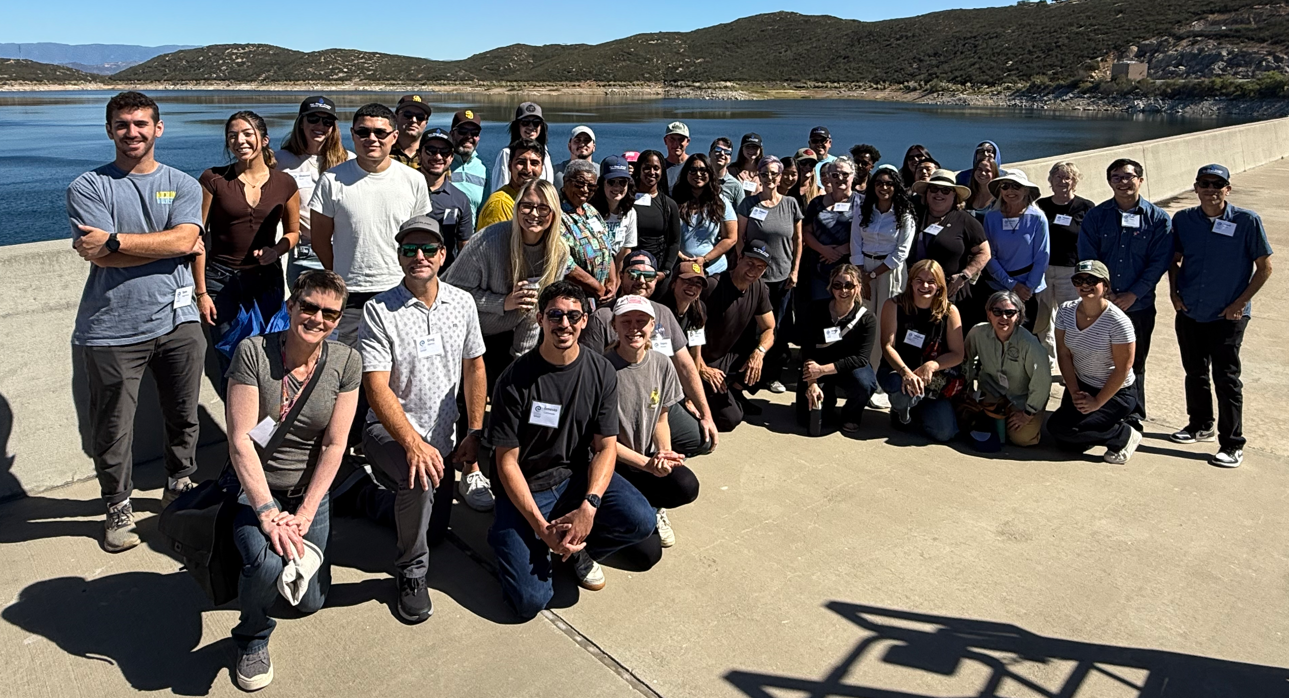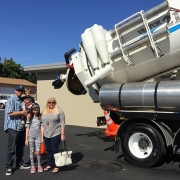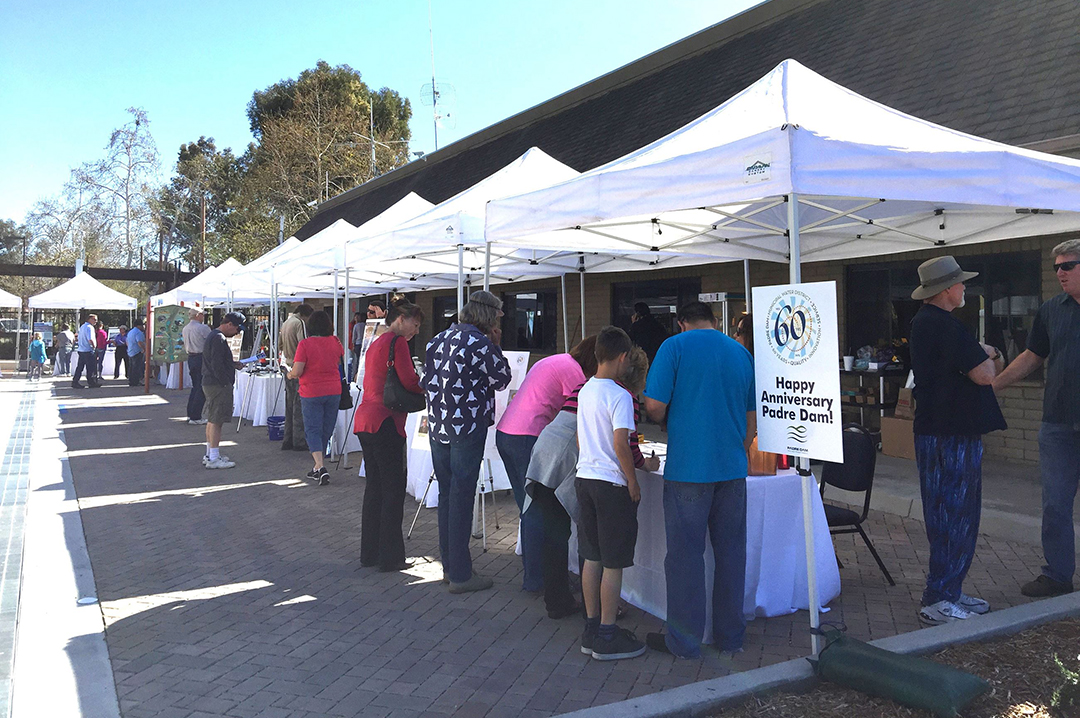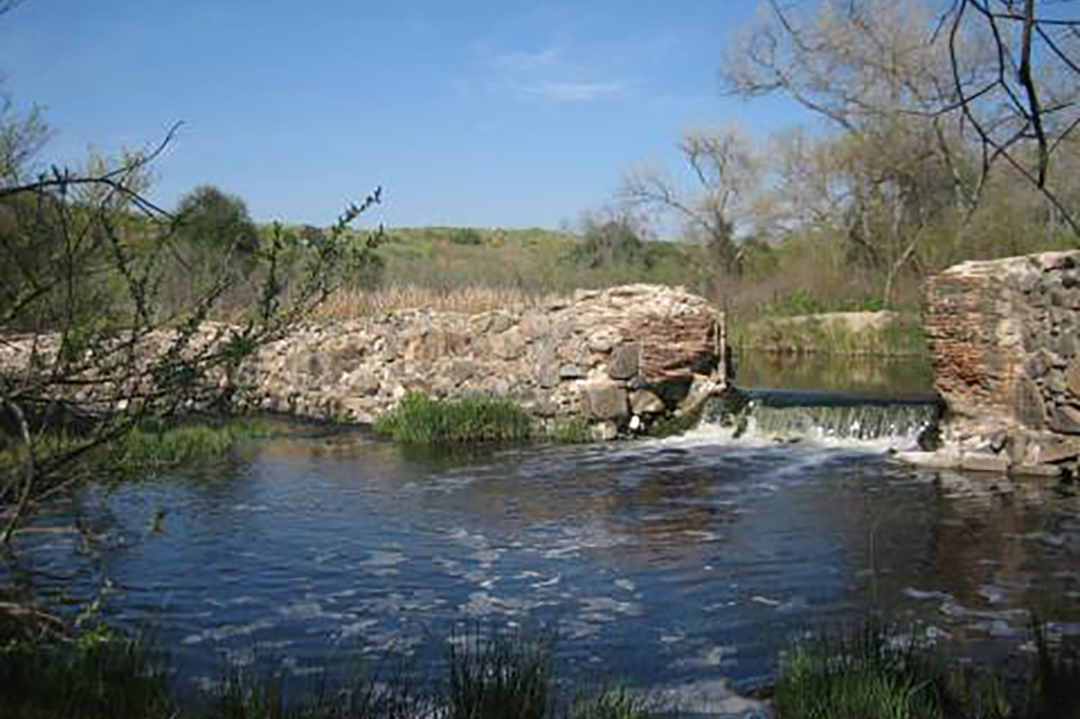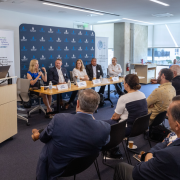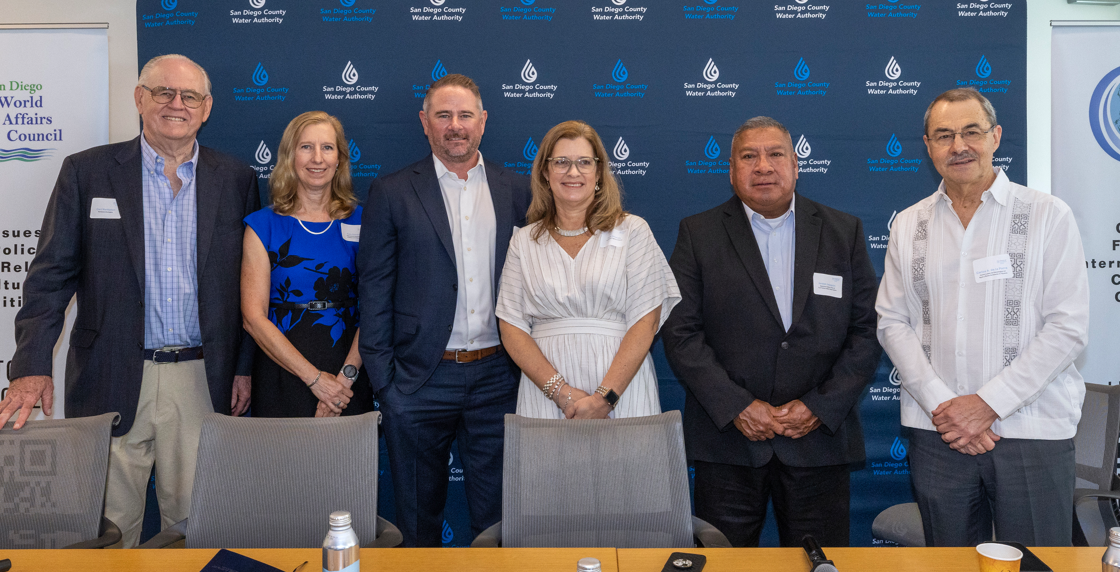Member Agencies Give Generously to Nonprofits During Holidays
San Diego region’s water and wastewater agency employees pitched in to carry on a tradition of holiday giving in 2025, benefiting a wide array of nonprofit community services.
Agencies Support Water For People Fundraising Effort

The Padre Dam MWD team enjoyed putting these baskets together. (L to R): Michelle Revilla, Accounting Specialist/Payroll Specialist-AWP, Marie Southwick, Administrative Assistant, Adrienne Borden, Financial Analyst, and Ben Brugman, Accountant. Photo: Padre Dam Municipal Water District
Employees of the Padre Dam Municipal Water District and Olivenhain Municipal Water District assembled fundraising gift baskets for the nonprofit CA/NV AWWA-Water for People nut basket fundraiser. Proceeds from basket sales raise funds to help provide clean water and sanitation to people in Latin America, Asia, and Africa.
Padre Dam employees prepared 100 gift baskets for the Water for People San Diego Chapter this year. Once sold, the gift baskets prepared by Padre Dam employees will raise $2,200.
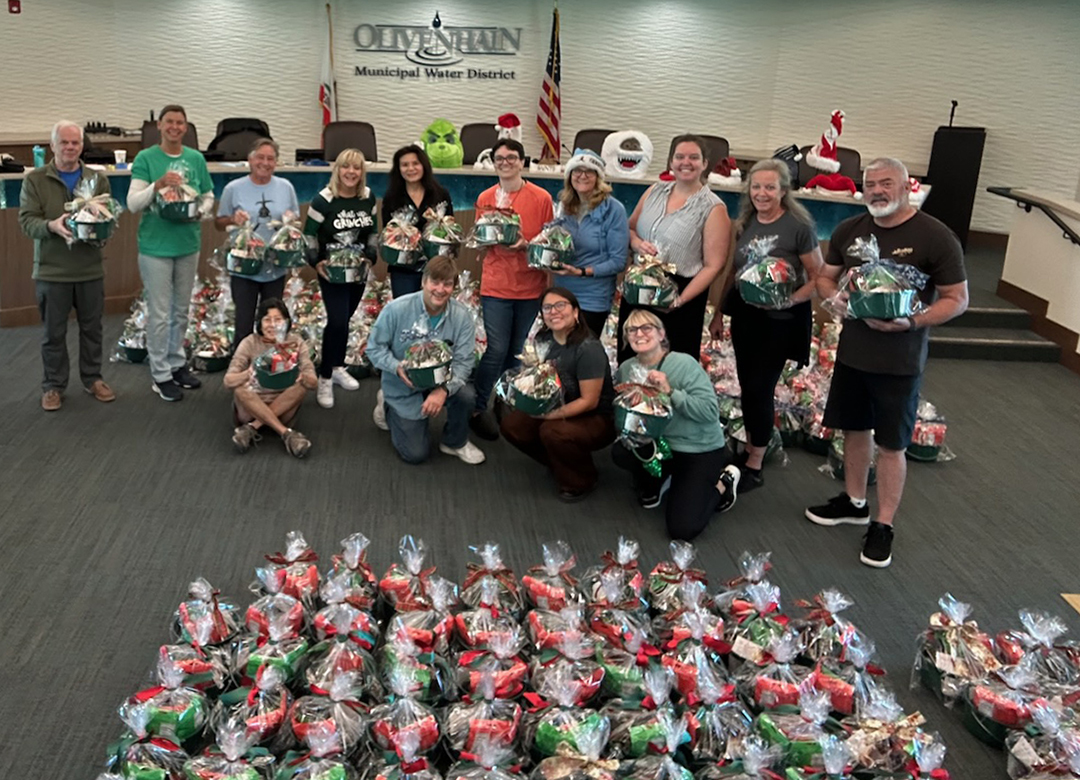
Olivenhain Municipal Water District employees and other Water For People volunteers give their time and talent in support of Water for People. Photo: Olivenhain Municipal Water District
Olivenhain Municipal Water District employees have supported Water for People fundraising for two decades. Olivenhain employees have also volunteered abroad, helping to set up water and sewer systems with the agency’s full support.
“Access to clean, safe water is essential, and supporting this cause is incredibly meaningful,” said Tom Bloomer, Engineer at Padre Dam Municipal Water District and Water for People Fundraiser Organizer. “Each year, our staff looks forward to assembling these fundraiser baskets, knowing that every basket helps deliver the vital gift of water to the communities who need it most.”
Olivenhain employees volunteered on weekends to assemble nut baskets of donated Wonderful Pistachios. OMWD also sold baskets to the public as holiday gifts. A total of 204 baskets were sold through OMWD’s efforts, accounting for $5,100. It also facilitated sales and collected money for 365 baskets for a total of $9,125 in sales to support the nonprofit, a record-breaking number.

Lucy with donations for the San Diego Humane Society from Olivenhain MWD employees. Photo: Olivenhain Municipal Water District
In October, OMWD employees collected donations for the San Diego Humane Society to support its efforts to rescue and re-home pets in need during the holiday season. Employees also gathered supplies to create 20 Meals on Wheels senior care packages for delivery during the holidays.
Otay Water District Boosts Food Bank and Water For People Fundraising

Otay Water District employees display some of the 200 baskets they assembled in support of Water for People fundraising this holiday season. Photo: Otay Water District
Otay Water District employees volunteered to assemble 200 baskets in support of fundraising efforts for Water for People, adding to the impressive effort from San Diego County water agencies with its contribution. The effort was led by Engineering Manager Beth Gentry, P.E., and Engineering Department Assistant Mary Lee Wanamaker.
Otay Water District staff also collected non-perishable food donations, along with diapers, pet food, and feminine hygiene products, for the San Diego Food Bank’s holiday drive to help families in need.
Again, the Otay Water District participated in the Chula Vista Holiday Parade. Staff decorated a service truck bringing smiles along the miles of the parade route with their creativity.

Leonardo Lopez, Utility Worker II (left) and Mario Ballejos, Utility Worker I (right) along with Eileen Salmeron, Communications Assistant, decorated the truck and the two utility workers drove the parade. It took three hours to decorate the vehicle. Photo: Otay Water District
Helping Hand From Sweetwater Authority

Sweetwater Authority employees stepped up to lend the Salvation Army a helping hand this holiday season. Photo: Sweetwater Authority
Sweetwater Authority employees have been active participants in the Salvation Army Angel Tree program for more than two decades.
Each year, Sweetwater Authority partners with the Salvation Army to host its own Angel Tree initiative. Employees take a tag that contains information about their recipient (age, gender, and toy request). The employee shops for the item and brings it back to the office unwrapped. The Salvation Army delivers the donated toys.
This year, staff stepped up in a big way, generously donating gifts and helping bring joy to children and families throughout the community.
Generous Escondido Employees Brighten the Holidays

City of Escondido Utilities employees
Emma Potratz, Environmental Programs Specialist, and Gio Cortes, Recycling Programs Specialist, play Santa Elves with holiday donations from city employees. Photo: City of Escondido
As they have for several years, City of Escondido employees hosted a food drive for the Salvation Army Escondido Corps, and supported efforts by the Escondido Senior Center to provide gift bags to 150 recipients this holiday season. Thanks to their efforts, employees donated 600 pounds of food items to support the Salvation Army’s food boxes.
Employees collected toiletries, small household items, snacks, food gift cards, batteries, and socks to stock the Escondido Senior Center gift bags. For the recipients, it may be the only holiday gift they receive this year.
Toys for Tots Drive at Helix Water District

The Helix Water District collected 366 toys for the Toys for Tots program at drop-off locations at its La Mesa administration office and the Water Conservation Garden. Photo: Helix Water District
The Helix Water District is a longtime supporter of the Toys for Tots annual campaign through the U.S. Marine Corps Reserves. Individuals were encouraged to drop off donations at the administrative offices in La Mesa, and the Water Conservation Garden, making it easy for the community to come together and bring smiles to local children with 366 donated toys.





